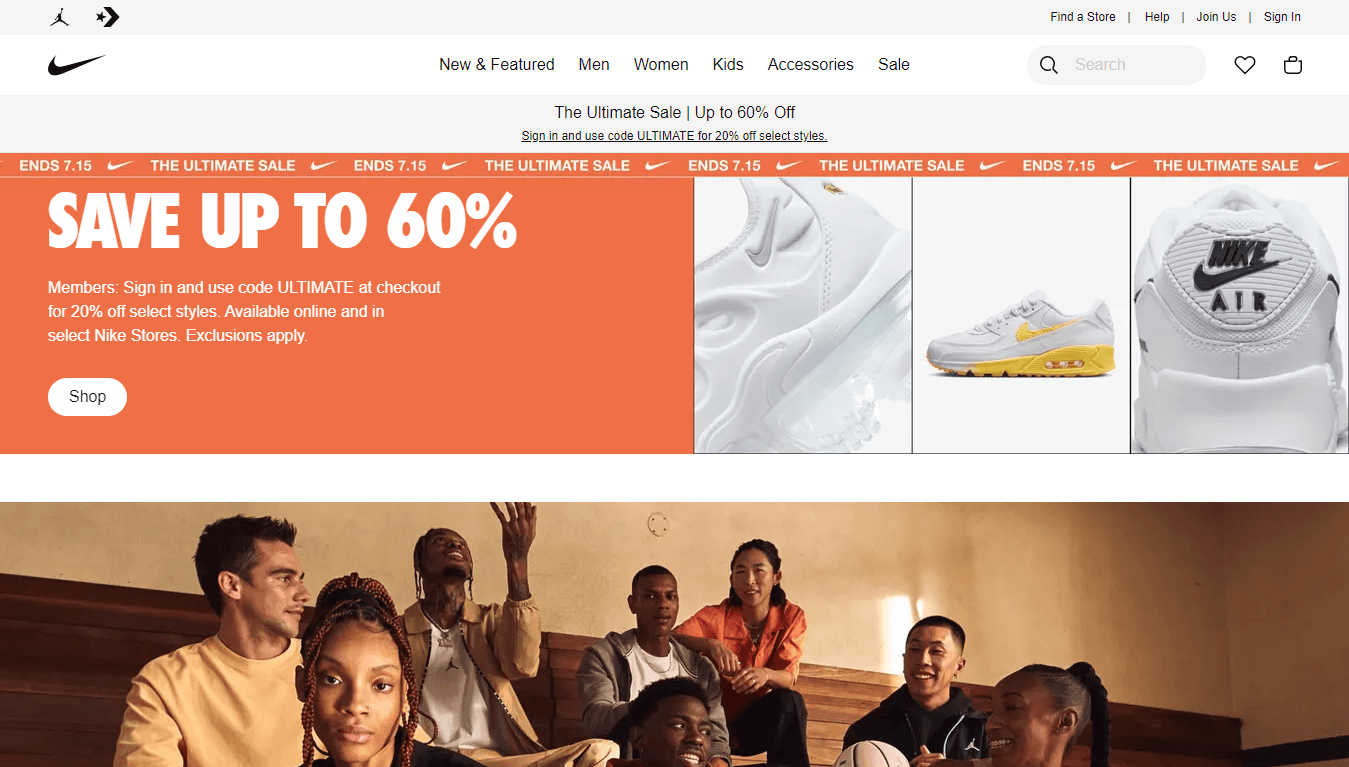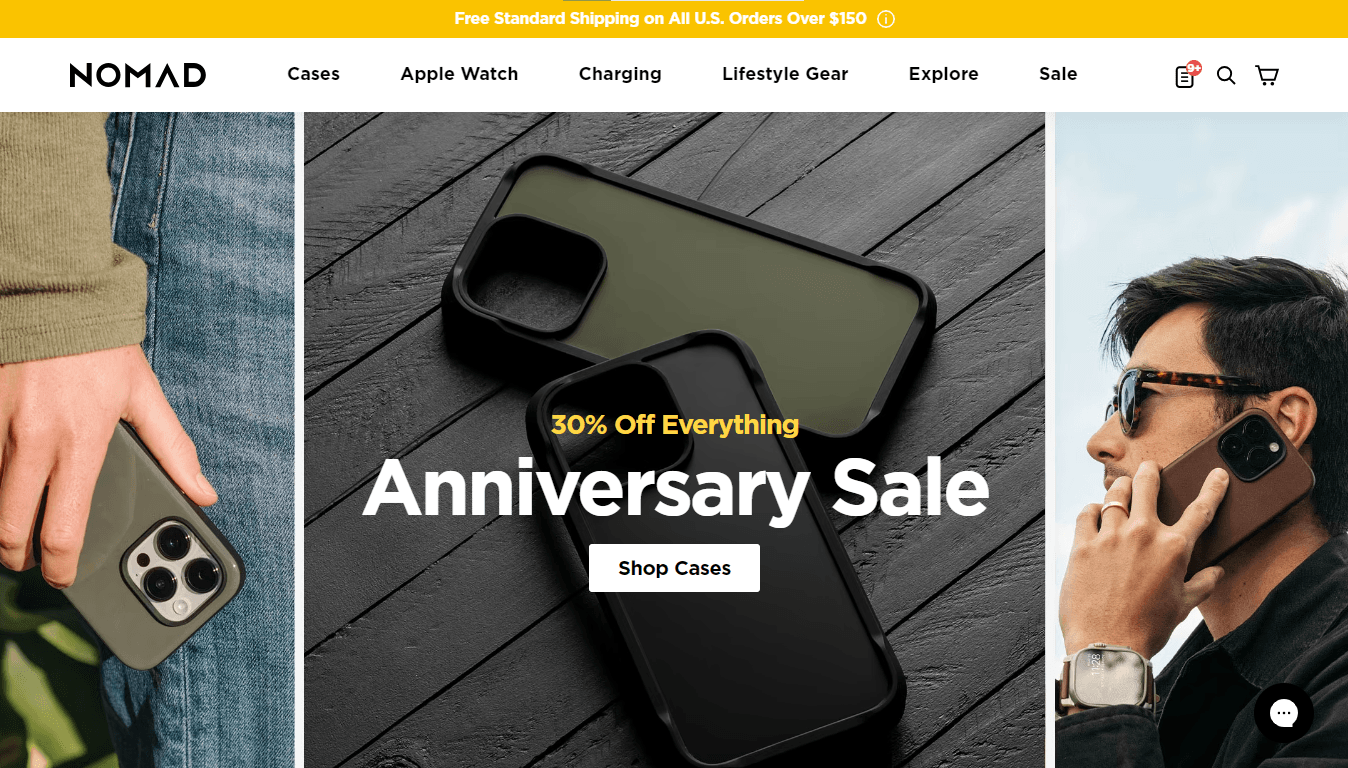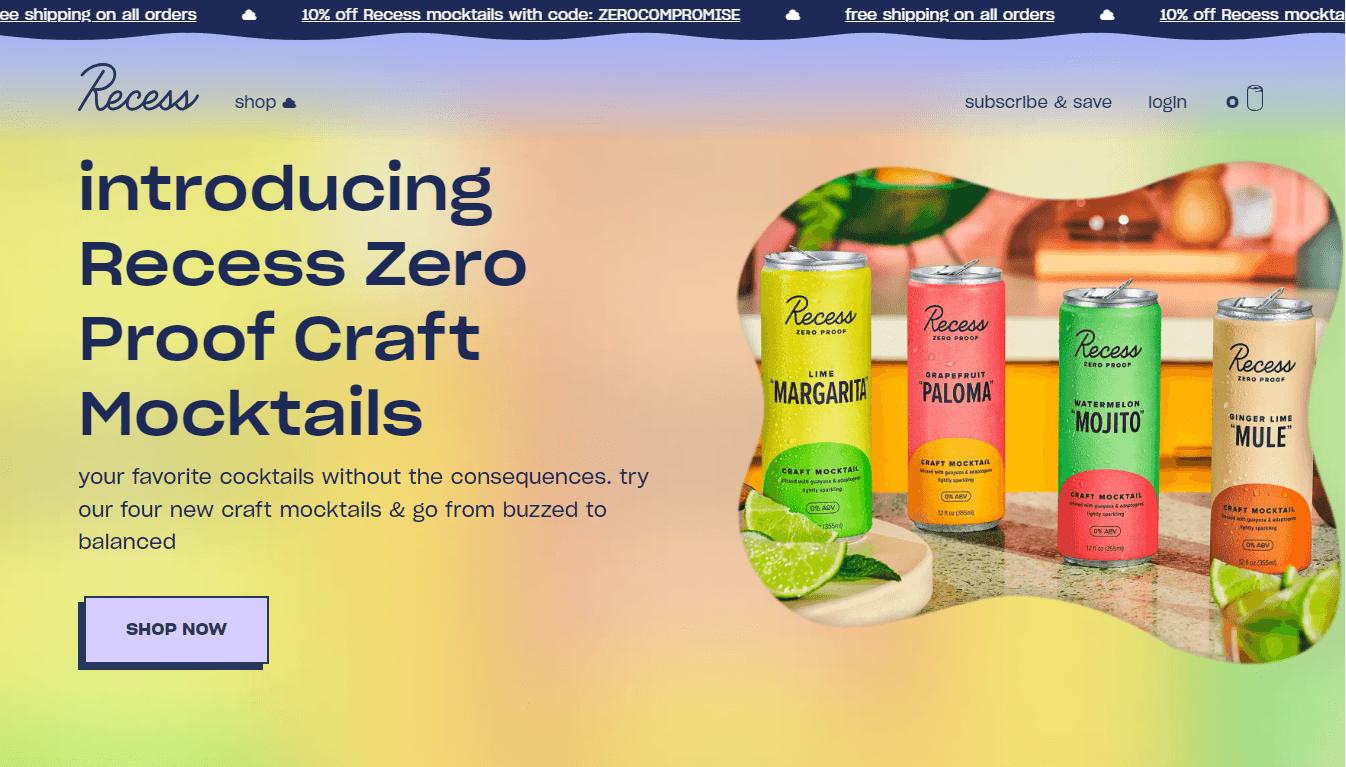In 2025, it’s estimated that eCommerce will make up 24.5% of all retail shopping worldwide, including both B2B and B2C. To be on top and peek at the curve of this competition game, your stores need to be more and more adaptive. Especially in the context of everything changing fast, from customers' expectations and market trends to the explosion of mobile commerce and also social commerce.
All of them require online business owners to keep up with new trends, quickly respond to technological change and catch up the demand of the modern-day customers. It’s not just a piece of cake.
That’s why headless commerce comes into play.
It can be said that Headless commerce has completely changed how brands sell online. As Forbes’s report, headless technologies secured funding exceeding $1.65 billion solely in the span of 2020-2021. With the increasing pace at which ecommerce businesses strive to match the latest trends, this figure is expected to expand further.
So, without further ado, go through this article and explore all you need to know about Headless commerce.
I. What exactly is headless commerce?
Currently, it such a wide range of choices for building e-commerce websites, but fundamentally, the structure of a website includes the following main components:
-
Frontend: Everything that users see and interact with when accessing a website, including the interface, content, functionality, etc., is received from the backend.
-
Backend: All the behind-the-scenes operations of a website or app that users cannot see, such as the database system, design tools, management tools, and custom functions.
In the past, for e-commerce, businesses typically relied on the traditional monolithic model, which was developed over two decades ago. At that time, the monolithic architecture was the only option for e-commerce businesses due to a lack of alternatives for building, continuously updating, and maintaining their websites.
In the monolithic model, the frontend and backend are tightly connected, so any changes on the website require improvements on both ends. Consequently, every frontend change leads to modifications in the backend structure and vice versa. Therefore, each technological decision becomes riskier and more complex as it directly affects the entire e-commerce website system.
Meanwhile, Headless Commerce is an e-commerce architecture in which the frontend is decoupled from the backend and connected through application programming interfaces (APIs). This enables businesses to easily customize and update functionalities without interfering with the user interface or CMS pages.
II. How headless commerce empowers for your business?
Headless commerce empowers retailers to provide a dynamic customer experience by enabling real-time synchronization of front-end changes across all online platforms. This includes updates to product catalogs, prices, discounts, images, and templates, ensuring a consistent user experience throughout.
It is worth highlighting that the absence of a "head" is not the main focus. The true benefits of a headless commerce architecture lie in the flexibility it provides for implementing omnichannel strategies, without being restrictive in terms of specific tools or legacy dependencies.
So, let’s explore some key benefits of headless commerce in this part to find out the answer: How going headless commerce can offer you and your business?
2.1. Unlimited customization
Different from the monolithic model of traditional commerce, the headless one approach offers the flexibility to create diverse consumer experiences. Since the front end is separated from the back end, modifying the content layer becomes easier and less risky, as it doesn't interrupt the underlying infrastructure.
A headless commerce architecture centralizes content and enables its delivery anywhere through APIs. This results in faster content delivery compared to traditional e-commerce platforms, leading to enhanced customer experiences. Headless platforms eliminate information silos by centralizing customer shopping data, such as purchase history, making it easily accessible.

With this customer information, retailers can personalize purchase recommendations, promotions, and browsing options specific to each channel, improving conversion rates. For instance, an e-commerce shopper who has previously purchased items for their dog may receive a targeted promotion for dog treats on their mobile device.
So, it can be said that headless solutions empower businesses to build customer experiences from scratch while allowing ongoing changes, customizations, and deployments.
2.2. Ease of integration
Going headless also gives store owners the capability to integrate various tools through APIs. APIs facilitate smooth communication and data transfers between software platforms, enabling flexibility and expanding the potential use of data. While the primary eCommerce functionality originates from the backend architecture, APIs provide a solution to enhance the user experience.
With the decoupling of the user experience from the backend, integrating different tools becomes relatively straightforward. This adaptability allows for seamless integration and opens up possibilities for improving the overall experience.
2.3. Omnichannel experience
Modern-day customers now expect a consistent purchasing experience across various digital mediums, including laptops, mobile phones, and chatbots. While monolithic solutions may claim to offer omnichannel capabilities, this is not always the case. If a legacy eCommerce software lacks support for a specific digital sales channel, incorporating it becomes challenging.

In contrast, headless commerce empowers developers to create a frontend for any new digital sales channel at their discretion. Headless solutions enable eCommerce brands to deliver a unified experience across every touchpoint by centralizing customer information and providing a comprehensive API layer.
This API layer allows frontend developers to integrate ecommerce into any customer experience. With the advancements in commerce-centric Internet of Things (IoT) , such as smart kiosks and interactive digital signage, the ability to add new digital channels to the overall eCommerce experience gives businesses a significant competitive advantage in the market.
2.4. Rapid experimentation
Experimentation plays a pivotal role in eCommerce, allowing businesses to explore different user experiences and pricing strategies that can have a significant impact.
Headless commerce offers a multitude of use cases in this regard. It enables businesses to introduce new offerings or features, test various promotions and discounts, explore different page layouts, and create more engaging user experiences.
One of the key benefits of headless commerce is that these experiments can be conducted without making changes to the backend systems. This flexibility empowers businesses to iterate and optimize their strategies, leading to improved customer engagement and enhanced conversion rates.
2.5. Agility & flexibility
Headless commerce platforms have the advantage of seamlessly supporting emerging technologies. This capability enables marketing teams to swiftly launch multiple sites for different brands, divisions, and portfolios. The flexibility provided by headless software allows brands to adapt to changing customer preferences and bring their offerings to the market faster.
Whether businesses aim to experiment with different shopping experiences or exceed rapidly evolving customer expectations, a headless platform is the ideal choice. It empowers them to innovate and experiment without compromising the essential functions of the backend. With a headless commerce approach, businesses can stay agile and responsive to emerging trends and customer demands while delivering compelling and personalized experiences to their audience.
III. Take a look at the reality: Explore use cases and examples
From giant players to niche ones, more and more eCommerce businesses are going Headless in order to keep up with the emerging technologies and consumer trends. Check out 5 highlights success cases to have an overview of the headless commerce’s reality.
3.1. Nike headless commerce

With the purpose of releasing a mobile-first eCommerce website to gain more sales from their mobile-dominant consumer segment, Nike has to customize every element. From the visuals to Call-to-action, all of them need to be optimized to suit smaller screen interfaces.
They implemented React SPA combined with Node.js backend for frontend (BFF) to be able to bring the best user experience across all pages. As a result, Nike started capturing more market share than their competitors - especially Adidas, and became a market leader.
3.2. Lancôme headless webstore

One of the most French luxury brands in perfume and cosmetics house - Lancôme - also realized the potential of Headless commerce for providing their customers with a best-of-class user experience. Lancôme went ahead, switched to PWA and gained a 17% increase in their conversion rate ever since they adopted the headless approach.
3.3. Nomad headless online store

Similar to other ecommerce brands, Nomad’s major concern was site speed. They explored various options to enhance site efficiency and also add functionality. Then, Nomad decided to go Headless through PWAs.
With headless commerce, their site boosted page speed and load time, improved their store performance and created better customer experience. As a result, the conversion rate for the site rose up by a staging 50%.
3.4. Recess headless commerce

Recess has gained popularity for its soothing animations that gracefully unfold while users navigate through the page. These animations contribute to a captivating shopping experience on their website, setting them apart from their competitors. This enhanced experience is made possible through their implementation of headless commerce.
By adopting the headless approach, the brand successfully delivers a visually stunning and engaging journey on their website, courtesy of tailor-made features enabled by this cutting-edge technology.
3.5. Rachio headless webstore

Rachio, a brand specializing in sustainable water solutions, aimed to deliver a seamless shopping experience across all digital touchpoints. To achieve this, they decided to embrace headless commerce, aligning their sales channels for a cohesive and uninterrupted experience.
By adopting a headless approach, Rachio successfully integrated their website and mobile application, creating an innovative alignment that offered customers a consistent brand experience. This strategic move allowed the brand to enhance their conversion rate while also reinforcing brand recall among their target audience.
IV. So, is headless commerce right for you?
There is no doubt that headless commerce offers more flexibility both in terms. However, is Headless completely right for your business?
The decision to go headless should not be made based on emotions or hot trends. In the history of IT, there were many promising technologies that did not deliver the expected profit for the companies because they were implemented at the wrong time or incorrectly.
It’s not easy to find out the general answer for all. Whether you rely on Headless commerce platforms like Shopify or not, you need to ask yourself the following questions when comparing your existing setup with a headless eCommerce system:
- What are your targeted devices?
- What technology do you want to use?
- Will a redesign happen at some point?
- Does the customer interface “work”?
Before fully embracing a headless commerce solution, it is crucial to understand that its implementation requires a significant commitment. For smaller companies with limited budgets and resources, this may seem overly ambitious.
While headless commerce offers long-term adaptability, it also demands substantial ongoing maintenance, requiring a substantial investment of time. Fortunately, there are numerous third-party platforms available that are ready to assist in achieving these solutions.
Moreover, if advanced personalization and highly customized multi-channel experiences appear overwhelming, headless commerce may not be the ideal choice for your business. The adoption of a headless commerce platform should align with your specific business goals. Just because a solution allows for greater creativity and developmental freedom does not automatically make it the right fit for your business.
Ultimately, customers seek to purchase from brands that understand their needs across all channels, as it enhances connection and engagement. With headless commerce, your backend already possesses knowledge of a consumer's previous purchases, enabling the utilization of this data to power personalized engines on CMS platforms, mobile apps, and social channels. We are only at the beginning of the possibilities within this ever-evolving industry, and headless commerce plays a pivotal role as we progress forward.
Conclusion
Undoubtedly, headless commerce is experiencing a notable rise in popularity. As the headless commerce market continues to evolve, we can anticipate increasing standardization of platforms and the availability of more tools and resources catering to businesses of all sizes.
It can be said that headless commerce is the future of eCommerce. So, will you go Headless?
